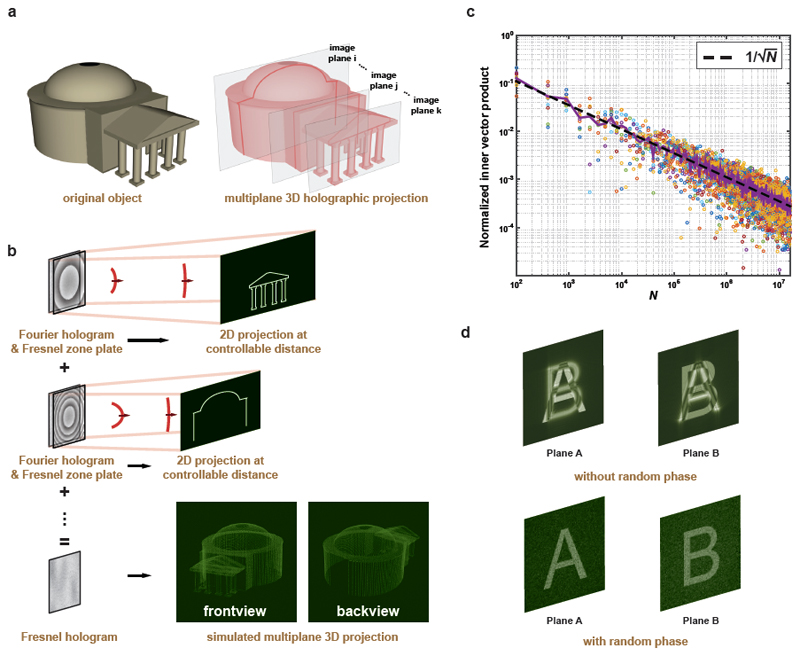Figure 1.
(a) Computer-generated holograms need to comprise large numbers of individual holograms of 2D images projected to different foci to serve as realistic representations of 3D objects, requiring excellent depth control, separation and elimination of crosstalk. (b) We simultaneously project multiplane images with controllable separation, while remaining in the Fresnel regime. To achieve this, we add a phase Fresnel Zone Plane (FZP) to a phase Fourier hologram to shift its image to the focal plane of the FZP. This corresponds to projecting a Fourier image in the Fresnel regime. Multiple holograms can be generated this way, each is designed to project a slice of a 3D object, then superposed to create a single Fresnel hologram. (c) Normalised inner product of two complementary checkerboard images is calculated as a function of total pixel size (N). The phase of each source image is random, uniformly distributed over 0 – 2π. (d) Adding random phase to each image suppresses unwanted crosstalk.

